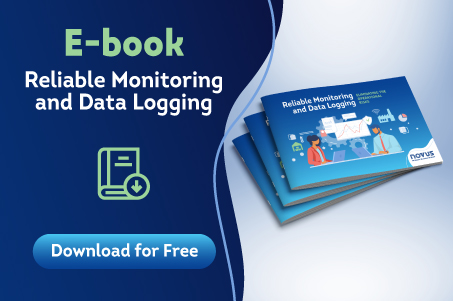5 steps to digitalize the temperature recording process
Digitizing the process of recording temperature is the latest step in the evolution of a discovery made at least three millennia ago. The ability to refrigerate products has brought advances in nutritional variety and healthcare and promoted global access to a plethora of supplies that depend on low temperatures. Understand how the technology to digitally record the temperature has reached the present day.
Refrigeration: a life-saving innovation
Over 3,000 years ago, mankind discovered that food and other materials had a longer life span when subjected to lower temperatures. This was crucial for the population development, as it allowed food to be transported over long distances. Thus, regions that did not have a certain productive capacity began to receive supplies from productive regions, which allowed not only the survival of the former, but also the intensification of cultural exchanges.
Many centuries later, in 1796, Edward Jenner developed the first antiviral vaccine. This vaccine was the result of a variation of a disease that affected cows – by the way, did you know that the word “vaccine” in Latin means “from the cow”?
The combination of these two processes (that is, cooling to increase the conservation plus artificially inducing antibodies in the human immune system) resulted in an international effort to eradicate smallpox between the 1960s and 1970s by expanding immunization programs. This way, it was necessary to create reliable systems capable of preserving the vaccine during travel and monitoring the refrigeration system.
These needs led us, as a society, to develop what became known as the “cold chain”. Therefore, it was not only possible to store vaccines, but a whole class of products classified as thermolabile.
As a result, technological advance made it possible to create various storage systems. However, another question arose: how to ensure that these systems are reliable?
Measurement: From human control to digital temperature recording
The measurement, which is done by placing a thermo-hygrometer inside a refrigerator, is one of the classic ways of doing this, because it establishes a procedure. From that point on, one or more people (usually nurses, nursing assistants, or pharmacists) must be trained to check the minimum and maximum temperatures at certain times of the day. The notes can be presented on a physical spreadsheet, which allows the data to be stored for at least two years.
In theory, the traditional method works. We say that because in case of failure, how would the error be noticed? How long would it take to make a correction? What would be the damage? Knowing that it is possible to physically compromise the information, how would it be possible to identify possible adulteration? How unproductive would the essential professionals in their areas be? Faced with these questions, NOVUS has thought of a 100% digital system, ideal to guide professionals and institutions during the digitalization process, giving them more autonomy and increasing the security of their data.
How to digitalize the temperature recording process
If there are still questions about the benefits of maintaining control and temperature recording digitally, follow these steps:
1 – List 3 to 5 of your biggest problems with the current method.
2 – After listing these problems, you will know their impact. From there, you can divide the digitization process into phases, based on the impacts produced. After setting up the phases, you will have a clear path to the ideal solution.
3 – Define the priority equipment and sectors to start the implantation. If the main problem entails equipment failure, start with a scalable solution that monitors the process and alerts you in real time. If there is a problem with data leakage, consider adopting a system that can save your data securely.
4 – Search for open-source solutions. This way you will not be dependent on a single organization. This increases the chances that the process will fit your needs and makes it easier the integration with existing systems.
5 – Talk to partners who have experience in this process and can help you along the way to digitize the data and qualify your staff.
NOVUS has developed the Connect line, a solution that supplies different demands and reduces losses. This line guarantees that the information will always be available and increases control over your data, preventing you from wasting time or seeing your employees’ productivity drop.
Contact us through the link: CLICK HERE.

















